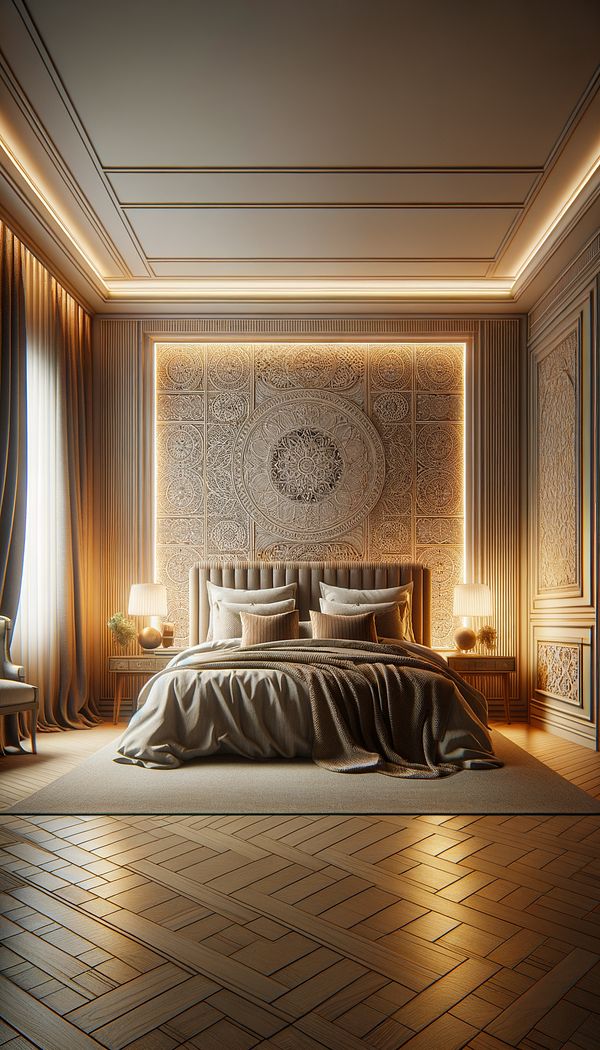What is a Backdrop?
In interior design, a backdrop refers to any surface or feature behind a key area of focus that sets the stage or enhances the aesthetic appeal of the space.
Description
In the realm of interior design, a backdrop is essentially the scenic canvas against which design elements are positioned to achieve a visually appealing and cohesive look. This could be anything from a beautifully painted wall behind a bed in a bedroom, a textured wall covering in a dining area, or an intricately tiled wall in a bathroom. By definition, a backdrop should enhance, not overwhelm, the primary focus of the space, whether that’s furniture, artwork, or architectural features.
Selecting the right backdrop is crucial in setting the tone and mood of a room. It can be a powerful tool in accentuating themes, highlighting color and patterns, and adding depth and dimension to a space. The choice of materials, textures, and colors for a backdrop must be made with consideration to the overall design aesthetic and the narrative that the space intends to convey.
Effective use of backdrops can transform an ordinary space into an extraordinary one by simply creating a compelling visual focal point. For this reason, understanding how to choose and implement backdrops is an essential skill for interior designers.
Usage
Some common applications of backdrops in interior design include the use of statement wallpaper behind a headboard in a bedroom, a bold paint color in a living room to highlight a conversation area, or a custom mural in a conference room to inspire creativity. In each case, the backdrop plays a crucial role in defining the space and enhancing its character.
FAQs
-
Can backdrops only be used on walls?
No, backdrops in interior design can extend beyond walls to include floors, ceilings, and even furniture pieces that act as a visual anchor in a space.
-
How do I choose the right backdrop for my space?
Selecting the right backdrop involves considering the room's size, the natural lighting, the desired mood, and how the backdrop will complement existing or planned design elements in the space.
-
Are there any trends in choosing backdrops?
Trends in backdrops shift with overall interior design trends, often including bold patterns, textured materials, and innovative uses of color. However, it's essential to choose a backdrop that aligns with your personal style and the functionality of the space.
Practical Application
When selecting a backdrop for your design project, consider the visual impact it will have. Start by defining the focal point of the room and choose a backdrop that enhances this area without competing for attention. Consider the play of light and shadow throughout the day and how different materials and colors might interact with this natural light. Testing large samples of your backdrop material in the actual space can be a helpful tool in making the right choice.
-
Decorating Principles & Elements330 articles
-
Color & Patterns154 articles
-
Wall Treatments & Finishes157 articles
-
CoastalCoastal is an interior design style that is inspired by the look and feel of a beach and ocean.
-
Filament LightingFilament lighting refers to a type of light source characterized by visible filaments inside the bulb that glow to produce light.
-
BeadboardBeadboard is a type of paneling characterized by a row of narrow wood planks lined vertically, with each plank featuring a rounded bead-like ridge along its edge.
-
BobecheA decorative element that surrounds the base of a candle or candelabra to catch wax drippings.
-
Heat Transfer PrintingHeat transfer printing is a printing method where designs are transferred to materials using heat and pressure.
